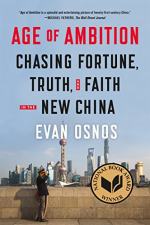|
This section contains 1,631 words (approx. 5 pages at 400 words per page) |

|
Summary
Chapter 22 returns to Ai Weiwei who, though free from prison, was heavily restricted and monitored in his movement outside his studio. Ai clearly felt disheartened and powerless because of this treatment. While this case is extreme, Osnos links it to other examples of government control over the media. He states that censorship extended beyond news media to art forms like film and music and that many Chinese artists are frustrated with the restrictions placed on them. In many cases, foreign made films were far more popular because of their freedom from these limitations. This creativity imbalance also affected technology, where Chinese patents, while more numerous than any other country’s, were considered to embody far less value. While Ai and others attempted to fight this censorship, their efforts had inconsistent efficacy. In a less direct way, Osnos suggests that censorship had similarly limited...
(read more from the Chapter 22-Epilogue Summary)
|
This section contains 1,631 words (approx. 5 pages at 400 words per page) |

|




